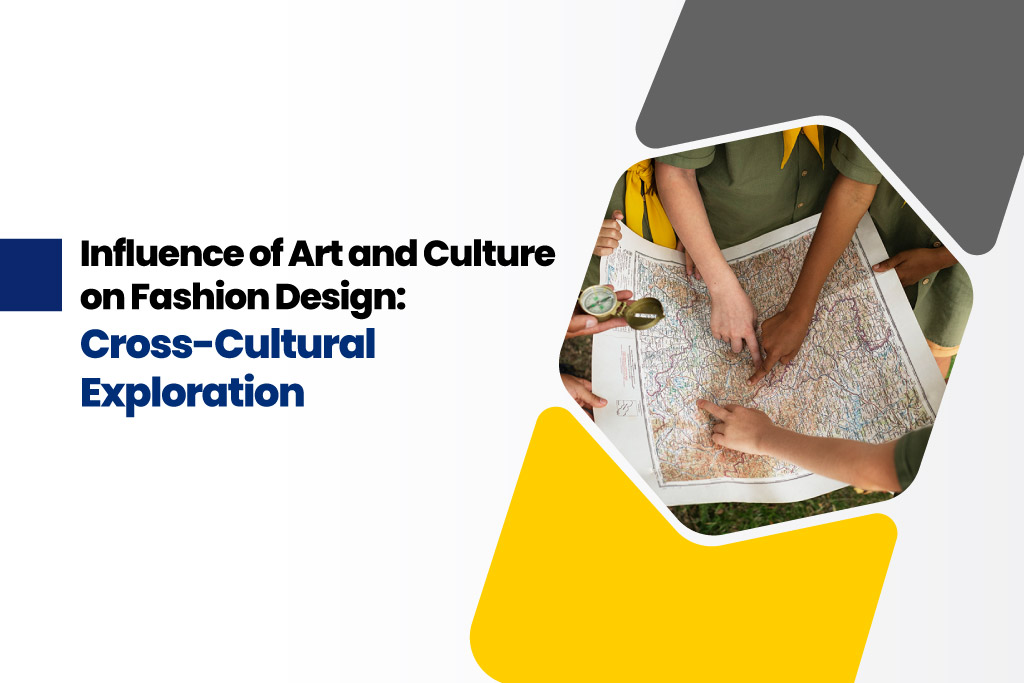Fashion and style are affected not just by individual expression, but also by the cultural context in which they exist. The vibrant colors of traditional clothing and the sleek lines of modern styles are examples of how fashion both reflects and reacts to the cultural forces that define our environment. In this blog post, we delve into the intricate relationship between art, culture and fashion design, exploring how this cross-cultural exploration shapes the aesthetics of the fashion industry.
Influence of Art in Fashion Design
1. Historical Art Movements as Muse
Fashion designers have always looked to historical art movements for inspiration from Cubism to the Renaissance. Clothing becomes wearable artwork when the detailed brushstrokes of a painting or the avant-garde shapes of a sculpture are incorporated into it. Designers frequently reinvent classic works of art, putting them onto textiles and establishing a distinctive conversation between fashion and art.
2. Colors and Compositions
A wide range of colors and compositions are introduced to designers through art. Fashion color palettes and the arrangement of components within an article of clothing are directly influenced by the way painters utilize color to generate emotions and create equilibrium. Fashion items become living canvases when brilliant colors and carefully considered arrangements are combined.
3. Avant-Garde and Wearable Art
This genre blurs the lines between art and fashion in a particularly interesting way. Designers experiment with unusual materials, shapes, and structures to push the creative envelope and turn clothes into works of art. Fashion shows transform into immersive art experiences, and runways become galleries.
4. Artist Collaborations
Fashion designers and artists are working together more and more frequently. Limited-edition collections, where the distinct viewpoint of an artist meets the creative sensibility of a fashion business, are given new life by these collaborations. These partnerships not only result in aesthetically magnificent creations but also raise fashion to the level of true art.
5. Artisanal Craftsmanship
An essential component of luxury fashion, artisanal craftsmanship has its roots in classical art forms. Clothing is transformed into works of art through artisanal techniques such as hand-embroidered and hand-painted materials. This dedication to craftsmanship gives each piece a touch of individuality while also preserving old techniques.
The connection between architecture and fashion is undeniable. Architects and fashion designers share a common language of creativity, form and structure. B Des Fashion Design programs in Coimbatore provide students with a comprehensive understanding of design principles and artistic expression that influence fashion.
The Influence of culture on fashion design
The fusion of diverse cultural elements contributes to the vibrant and ever-evolving landscape of fashion design. From traditional textiles to symbolic motifs, the influence of culture weaves a compelling narrative through the fabric of fashion.
1. Traditional Textiles as a Cultural Palette
Using traditional textiles in fashion design is one of the most common ways to communicate culture. Designers use fabrics that represent the history of a specific area or community as their canvas. Traditional textiles give clothing a sense of cultural identity, whether it’s the vivid batik of Indonesia, the delicate silk of Japan or the elaborate patterns of Indian saris.
2. Symbolic Motifs and Cultural Significance
Fashion designers use symbols and motifs, which are frequently used by cultures to express meaning, to tell tales via their designs. Clothes serve as vehicles for cultural histories and symbols of identity, from the geometric patterns of African kente fabric to the exquisite embroidery of Palestinian thobes.
3. Fusion of Global Influences
Fashion designers find inspiration from a wide range of global cultures in today’s interconnected world. Designs that are eclectic and inclusive that highlight the richness of cultural diversity are the outcome of fusing several inspirations. In the field of fashion, traditional components from one culture can meld well with modern looks from another, fostering cross-cultural communication.
4. Traditional Garments and Modern Adaptations
The adaptation of traditional clothing is a common way that cultural heritage is incorporated into contemporary fashion. Fashion designers reinvent traditional silhouettes, like the kimono or cheongsam, by adding modern touches to them. This tasteful blending of the modern with the old honors custom while ensuring that fashion remains vibrant and current.
5. Ethical and Sustainable activities
Cultural influences cover ethical and sustainable activities in addition to aesthetics. Many fashion designers include sustainable materials and ethical production processes in their creations, drawing inspiration from the traditional craftsmanship and environmental conscience found in many cultures.
Aspiring fashion designers understand the significance of a well-rounded education that encompasses both artistic and cultural dimensions. Coimbatore, with its rich cultural heritage and a thriving educational ecosystem. The top 10 fashion designing colleges in Coimbatore focus on nurturing creativity, honing technical skills, and encouraging cross-cultural exploration in design.
To sum up, the field of fashion design is the evidence of the timeless value of artistic and cultural influence. Cultural influences infuse fashion with a richness that goes beyond aesthetics. It’s a canvas where personal expression combines with a shared history to produce a visual symphony that transcends time and location. Fashion becomes a medium for artistic expression, a visual language that communicates to the spirit through the fusion of design and art.



